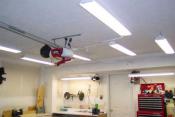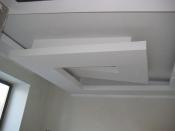Search
Login
Water heating in a stationary pool: heating devices and characteristics
Every year, pools are gaining popularity. Owners of private houses and suburban areas are increasingly installing pools that are convenient, prestigious and relatively affordable. At the planning stage of the purchase and design of the pool, it is necessary to solve a number of issues related to water heating. After all, you want to use the pool not only in the hot summer, but also in the cold season.
There are special devices that heat the water in the pool to the optimum temperature. Between themselves, they differ in the principle of action, efficiency of use, cost-effectiveness and cost.
Content
- Pool water heating systems
- Devices for heating water: principle of operation, advantages and disadvantages
- instantaneous electric heater is the best option for a small pool video
- solar collectors innovative approach to pool heating video
- heat exchanger significant savings in heating water
- heat pump environmental energy as a heat source for a pool video
- fuel water heater the use of gas and liquid fuel for heating water
- How to reduce heat loss in the pool
Pool water heating systems
Water heating is necessary both for indoor pools and for outdoor pools. Of course, in the summer, the water in the pool will warm up completely from direct sunlight, but with the approach of autumn, when the nights become cold and the days are getting shorter, there is a need for additional heat sources.

For a comfortable swimming in the pool (depending on the category of bathers), the water temperature should have the following indicators:
- for active, sports games 22 degrees;
- for children 28-30 degrees;
- for adults 24-26 degrees;
- for the elderly, at least 26 degrees.
It is possible to maintain the optimum temperature of the water in the pool using special heating devices, the choice of which determines the heating system.

Pool heating systems can be divided into two types:
- heating due to electric heater;
- heating due to heat transfer.
The heat exchange based heating system includes:
- heat exchangers based on solar energy;
- heat exchangers in which the main sources of heat are the central water supply system, a heating boiler;
- heat exchangers using other heat sources (heat pump).
Based on the calculation of water heating in the pool, which will take into account all the features of the design and operation, a water heating system for the pool is selected.
Devices for heating water: principle of operation, advantages and disadvantages
instantaneous electric heater is the best option for a small pool
The pool electric heater is perhaps the easiest and most affordable way to heat water. The main purpose of the device is the heating of a continuous stream of water with minimal pressure fluctuation.

The principle of operation of the heater: water circulates through the housing in which the heating elements are located. The heater body is made of stainless steel, titanium or high-quality plastic, and the heating elements are made of durable stainless steel alloys that can withstand high temperatures. An electric heater is installed behind the filtering equipment, so the water enters the pool already purified.

To accommodate the heating equipment does not require a separate large room, since the heater has a compact size rather small indoor booth.
When buying a instantaneous water heater for a pool, you should pay attention to the following parameters.
- Power of the device (3-18 kW). Some models are designed for connection via a three-phase network. For indoor indoor pools, the heater power is calculated based on 0.3-0.5 kW per 1 sq.m. pool, for open 0.5-1 kW.
- The maximum heating temperature. For most instantaneous electric heaters for swimming pools, this figure is 30-40 degrees.
- Volume of a channel and working pressure.
- The presence of protective and regulatory devices (overheat protection sensor, thermostat and flow sensor), which will protect the device from breakdowns.
- Materials for the manufacture of an electric heater. Heaters are considered more durable, the case of which is made of stainless steel.
It should be borne in mind that with significant heat loss (open-type pools or pools located in unheated rooms), energy consumption increases significantly
The capacity of instantaneous heaters is not enough for large pools with a volume of more than 35 cubic meters, especially if such a pool is located on the street. In addition, such a unit can not be used in a house with a restriction on energy consumption or poor wiring.
Small heaters (3 kW) are often used to heat water in Intex pools and other inflatable and frame pools.
It is important to remember that while the heater is in operation, it is strictly forbidden to be in the pool!

Advantages of instantaneous heaters:
- water heating is fast enough;
- using the thermostat you can adjust the temperature of the water;
- in the absence of water, a flow sensor is activated that turns off the water heating;
- compact dimensions of equipment;
- the control system is automated.
Disadvantages of an electric heater:
- significant cash costs for heating water (high energy consumption);
- low power;
- not all homes have the ability to install this system.
Solar collectors innovative approach to pool heating
The sun is an inexhaustible source of heat that can be effectively used to heat water in an outdoor and indoor pool.
Many people think that for an outdoor pool there is enough heat from direct sunlight. However, this statement is true only when the pool is located in a sunny area. And if it is located under a canopy or indoors? With the use of solar systems, solar heating of the pool water becomes more regulated.

The solar water heating system consists of three main elements:
- solar collector (tubes connected to each other on a large screen);
- pump filter;
- control valves.
The mechanism of action of the solar system is quite simple. In intense sunlight, the sensors instruct the automatic bypass valve to direct the flow of water from the pool through the collector heat exchanger. Inside the heat exchanger, water will be heated due to the coolant circulating in the closed solar system (collector tubes).

When the set heating temperature is reached, water flows back to the pool. If the solar collector has cooled down (cloudy weather), then water does not circulate through it.
The solar collector is usually located on the roof or in a well-lit area.
For heating in odes in the pool, the following types of solar collectors can be used:
- highly selective flat and flat collectors;
- vacuum tubular manifolds.

Their choice will depend on the climatic conditions of the region, the installation location and the volume of heated water.
When calculating the size of the solar system (collector area), a number of factors must be taken into account:
- pool parameters;
- type of pool (indoor, outdoor);
- pool attendance;
- hiding pool or not;
- required water heating temperature (minimum and maximum);
- installation location and inclination angle of the manifold.
For an outdoor pool, the installation surface should be about 70-100% of the water surface area, for an indoor pool, about 60% of this area
The advantages of solar systems include:
- universality of use can be used for heating water in the pool and for supplying a private house with hot water;
- ease of management;
- fast water heating;
- system maintenance costs are virtually nonexistent.
Disadvantages of using the solar system:
- collector heat transfer coefficient decreases sharply in cloudy weather;
- buying equipment and installing a solar system is quite expensive.
Heat exchanger significant cost savings for water heating
To heat water in the pool, heat exchangers are often used, which are connected directly to the heating system of the house.

Externally, the heat exchanger resembles a large flask, and inside the device there is a coil through which hot water passes (coolant). Water from the pool is around the coil, washes it, and heats up.
From the general heating system, water enters the coil through a circulation pump, the operation of which is regulated by a solenoid valve. The valve, in turn, is controlled by a thermostat. The owner of the pool sets the temperature level, and the rest of the process is regulated automatically.

The main criterion for choosing a heat exchanger is its power, which can reach 200 kW. The choice of power directly depends on the volume of the pool.
At the first start of the heat exchanger, the required water temperature will be reached only after 28 hours. Such a long and gradual heating is needed to avoid instrumental collapse associated with fluid expansion. Further operation of the device is to maintain the desired temperature.
The heat exchanger is placed after the pumping and filtering station, but before the disinfecting system, in order to avoid unnecessary contact of the equipment with chlorine contained in the water. In pools with sea or highly chlorinated water, it is better to install titanium heat exchangers.
Advantages of heat exchangers:
- saving money on water heating;
- high power, which allows the use of devices for heating large pools;
- ease of management (all processes are automated).
The disadvantages of the heat exchanger include prolonged heating of the water.
Heat pump environmental energy as a heat source for the pool
Using a heat pump is a fairly new way of heating water, the operation of which is based on the principle of multi-stage heat transfer from various coolants using condensate, gas compression, etc.
The initial source of heat (first stage of heating) can be domestic (industrial) effluents, heat generated during flue gas treatment, groundwater, thermal water. Any sources whose temperature is at least slightly higher than the temperature of the pool water can be used by a heat pump to heat the pool.

The principle of operation of the heat pump is as follows. The working fluid (a mixture of antifreeze and water) is pumped through a pipeline located underground. Due to the temperature of the soil, the working fluid at the outlet warms up by a couple of degrees, and is sent to a heat exchanger, where it transfers the received heat to the refrigerant.
The refrigerant, in contact with the heated liquid, instantly boils, steam is formed, which enters the compressor and is compressed there to 25 atmospheres. During compression, a sharp rise in temperature to 50-55 degrees. The energy received is spent on heating a house or pool water.
A significant part of the energy is wasted on the functioning of the cyclic operation of the system (refrigerant and working fluid, passing through the cooling system, meet and the cycle repeats).
The capacity of the heat pumps is enough to ensure full heating not only of the pool, but also of the suburban cottage as a whole.
Advantages of using heat pumps:
- fast and sufficient heating of water, premises;
- high power;
- use of alternative free heat sources.
To date, heat pumps are not widely used, due to their high cost.
Fuel water heater using gas and liquid fuel to heat water
Fuel heater equipment operating on liquid fuel or propane (gas heaters). They are quite effective and economical, provided that they are used not only for heating the pool water, but for heating the house.
Before using the fuel heater, you will have to solve a number of issues:
- obtaining permission to install equipment;
- registration and proper paperwork;
- installation of a fire system;
- chimney construction;
- control of fuel reserves.
To maintain the optimum temperature of the water in the pool, the following fuel assemblies can be used:
- devices operating from liquid fuel are connected to the circulation line (in the area after the filter) or are equipped with their own water pump; usually have a power of 45kW;
- gas heaters work on propane, have a built-in filter or a circulation pump; heater power 37 kW;

- standard gas heaters are installed in the circulation line behind the pump filter; the system is regulated by the volume of water flow (when the amount of water is reduced, the gas supply stops); water heaters of this type can have a power of 17.5, 23 and 28 kW.
Advantages of fuel heaters:
- economical fuel consumption;
- the possibility of complex use of a heater (home heating, water heating);
- system automation.
Disadvantages of heaters:
- difficulties in registration, registration and installation;
- high initial costs for the purchase of equipment;
- some systems require annual cleaning.
How to reduce heat loss in the pool
The efficiency of any heating installation will increase significantly if timely care is taken to reduce heat loss:
- when choosing a place for the pool, it is better to give preference to the sunny area;

- the crown of the trees should be at a distance of no closer than five meters from the surface of the water;
- it is good if the selected place is protected from the wind it will keep warm, and swimming will be more comfortable;
- the outdoor pool at night should be covered with a special film, which reduces heat loss (by 80%) and reduces evaporation.

The type, capacity of the heating system and its cost will depend on the design features of the pool. It is better to entrust the installation of equipment to professionals who can guarantee the uninterrupted and safe use of heating elements.





